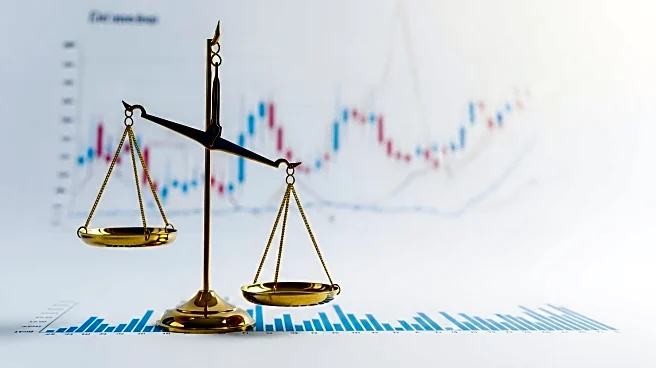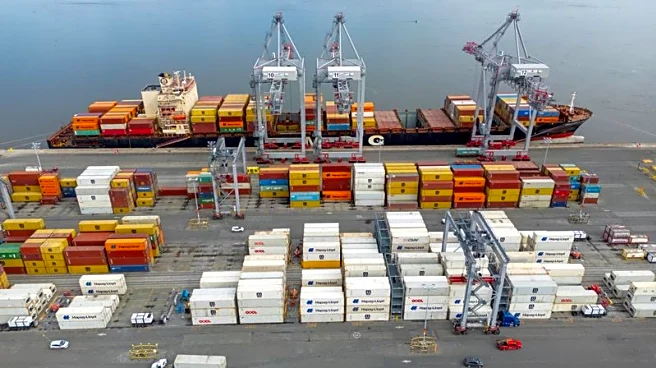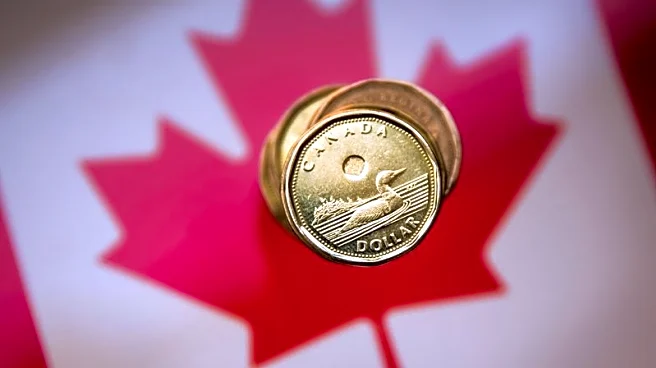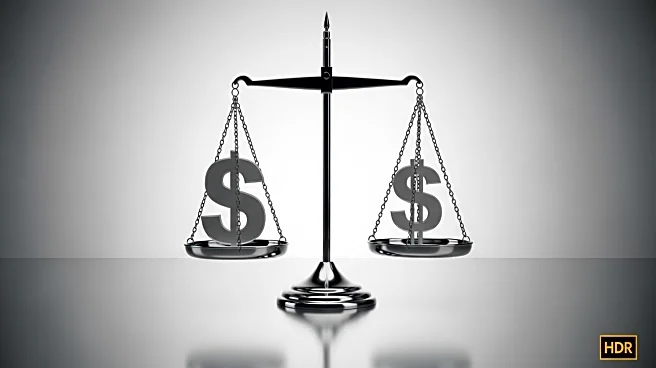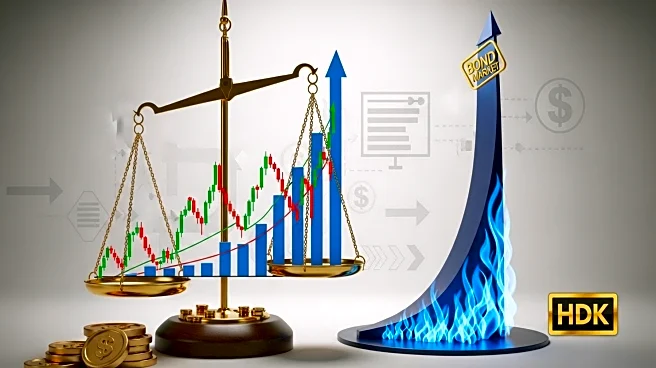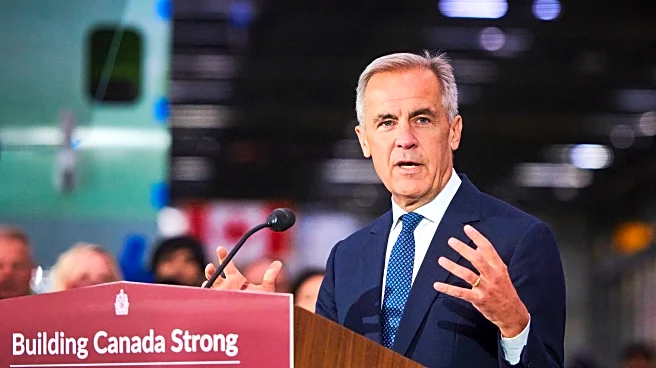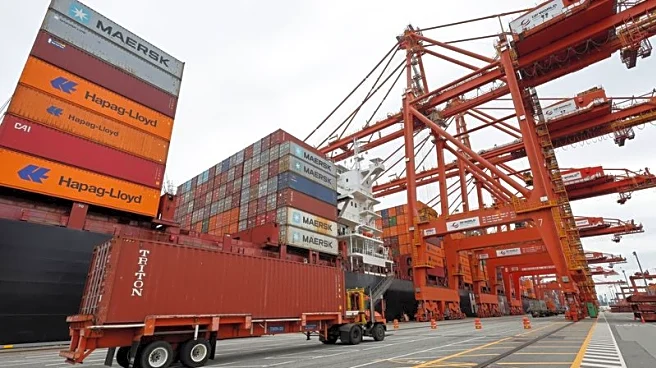What is the story about?
What's Happening?
The Canadian dollar has weakened against the U.S. dollar, reaching its lowest level in six days. This decline is attributed to rising global borrowing costs and increased speculation about a potential interest rate cut by the Bank of Canada. The loonie was trading at 1.3790 per U.S. dollar, with market data indicating a 50% chance of a rate cut at the upcoming policy decision on September 17. This speculation follows recent data showing a steeper-than-expected contraction in Canada's economy during the second quarter. The U.S. 30-year Treasury yields have also risen, reflecting investor concerns over fiscal deficits in major economies.
Why It's Important?
The potential rate cut by the Bank of Canada could have significant implications for the Canadian economy, affecting borrowing costs and economic growth. A weaker Canadian dollar may impact trade dynamics, particularly with the U.S., Canada's largest trading partner. The situation highlights broader concerns about fiscal management in major economies, which could influence global financial stability. Investors are closely watching these developments, as they may affect currency valuations and investment strategies.
What's Next?
The Bank of Canada's decision on interest rates will be a key focus for investors, as it could set the tone for future economic policy. If a rate cut occurs, it may provide short-term relief to the Canadian economy but could also lead to further depreciation of the loonie. Market participants will also monitor global fiscal policies and their impact on bond yields, as these factors will influence currency and investment markets.
Beyond the Headlines
The situation underscores the interconnectedness of global economies and the impact of fiscal policies on currency markets. The Canadian dollar's performance is not only a reflection of domestic economic conditions but also of broader global financial trends. The potential rate cut by the Bank of Canada highlights the challenges central banks face in balancing economic growth with fiscal stability.
AI Generated Content
Do you find this article useful?
